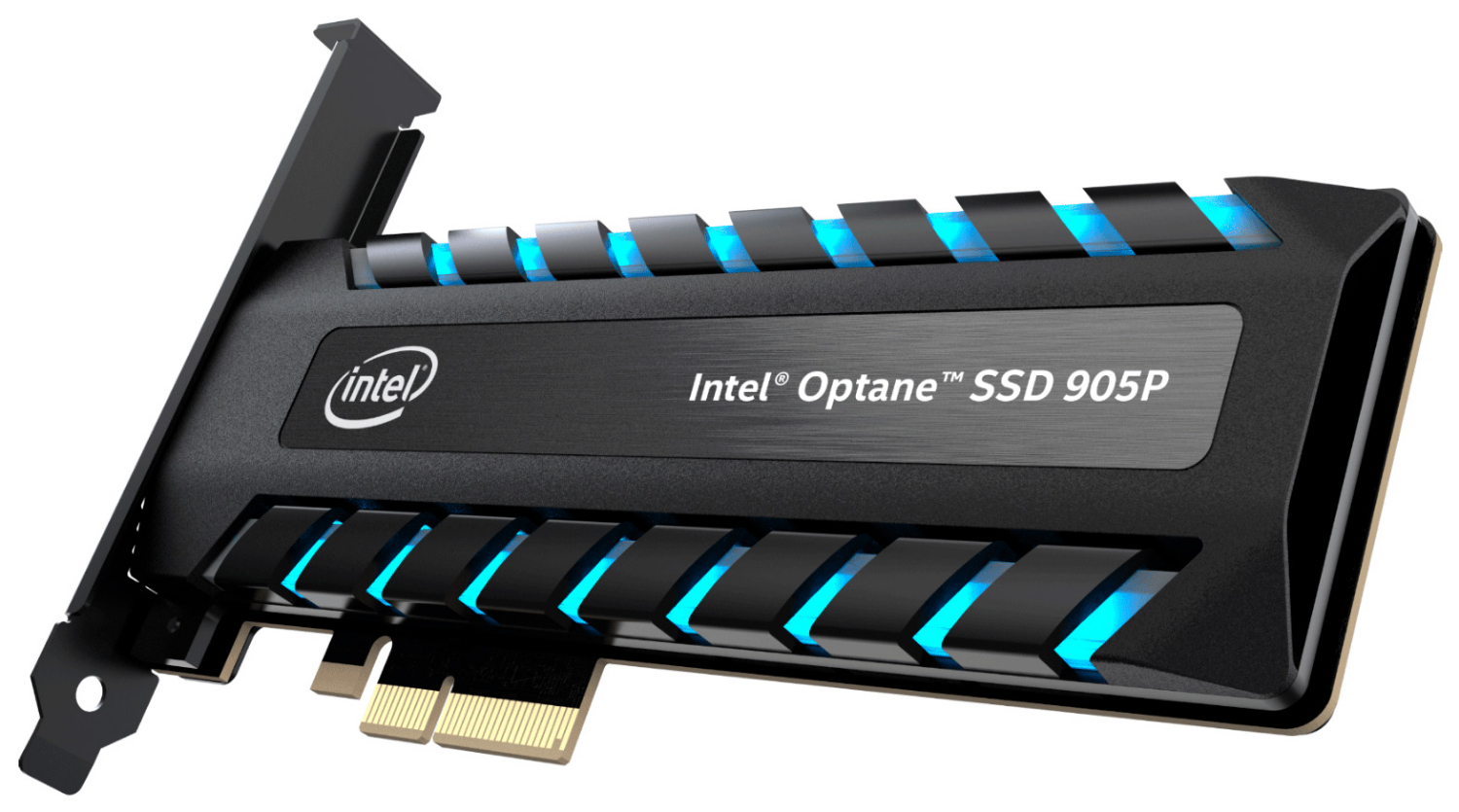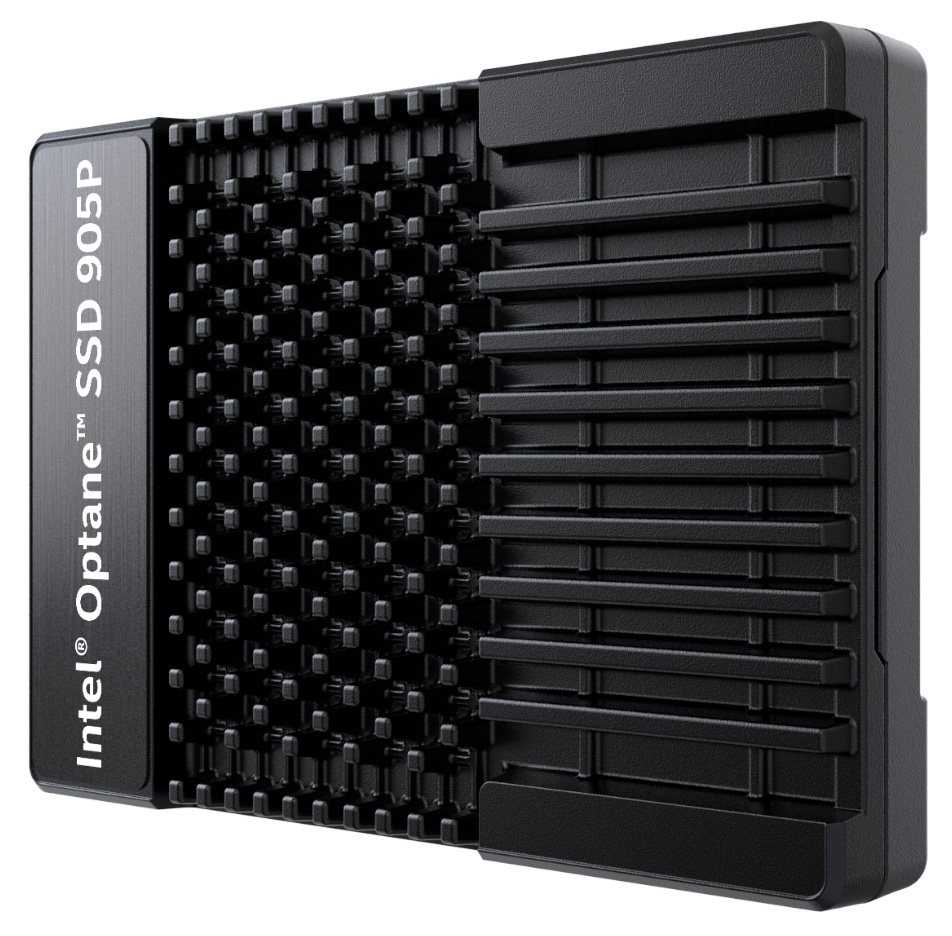Intel Optane SSD 905P Bulks Up to 1.5TB
Intel announced today that it has bumped the Optane SSD 905P's capacity up to 1.5TB, which will come in both U.2 and HHHL (half height, half length) add-in-card (AIC) form factors.


Built around Intel's 3D XPoint memory technology, the Optane SSD 905P was originally launched in 480GB and 960GB capacities. The 480GB model was confined to the U.2 form factor, and the 960GB model took the form of an AIC. Starting today, consumers can pick up the Optane-powered SSD in three new presentations. The 960GB model is now available in the U.2 format. The new 1.5TB model is available in both the U.2 and HHHL AIC form factors. In fact, we first saw the 1.5TB AIC variant inside the Falcon Northwest Tiki gaming desktop, so they should be on the market very soon.
Since all Intel Optane SSD 905P drives employ the same internal hardware and communicate with the processor through a PCIe 3.0 x4 interface, performance is fairly static across all models no matter the capacity or form factor. Consumers can expect sequential read and write speeds up to 2,700MB/s and 2,200MB/s with 4K random read and write speeds in the range of 575,000 IOPS and 550,000 IOPS. The 480GB model is rated with an endurance of 8.76 PBW (petabytes written), while the 960GB and 1.5TB models have a 17.52 PBW and 27.37 PBW rating, respectively.
The Optane SSD 905P will be making its way to the M.2 form factor in the not-so-distant future. It will initially launch in a 380GB capacity; it's unknown whether Intel will offer them in larger capacities. The chipmaker hasn't listed the technical specifications for the M.2 drive. Nevertheless, we don't expect its performance to be on par with the AIC models, but perhaps more in line with similar M.2 Optane SSDs
Intel didn't reveal the pricing for the new Optane SSD 905P drives. However, Cleveland-based computer hardware retailer CompSource has already listed the SSDs on its website. The Optane SSD 905P 960GB U.2 (SSDPE21D960GAX1) costs $1,415.39. The Optane SSD 905P 1.5TB, in U.2 (SSDPE21D015TAX1) and HHHL AIC (SSDPED1D015TAX1) formats carry even more eye-watering price tags of $2,395.70 each.
Get Tom's Hardware's best news and in-depth reviews, straight to your inbox.

Zhiye Liu is a news editor, memory reviewer, and SSD tester at Tom’s Hardware. Although he loves everything that’s hardware, he has a soft spot for CPUs, GPUs, and RAM.
-
dudmont Reply21339313 said:Why would anyone buy this over a evo970 ?
Because it's random performance is an order of magnitude better.......
That being said, I don't know why anyone who didn't need all their files on the fast possible drive, would need a 1.5tb. An extraordinary boot drive, but not much more, in my opinion, is all that's needed out of optane.
Ole' Chris Ramsayer(who seems to have exited Tom's, sadly), tried very hard to convey the qualities of Optane. I, sadly, think that only a handful of us ever got the picture that he was trying, rather hard, to make. -
Brian_R170 Somebody wake me up when Optane is available in a 500GB-class (or larger) M.2 2280 form-factor. Previous articles say that the upcoming Optane M.2 will be the 22110 form-factor, which is practically non-existent in consumer desktops.Reply -
jonathan1683 Reply21339514 said:21339313 said:Why would anyone buy this over a evo970 ?
Because it's random performance is an order of magnitude better.......
That being said, I don't know why anyone who didn't need all their files on the fast possible drive, would need a 1.5tb. An extraordinary boot drive, but not much more, in my opinion, is all that's needed out of optane.
Ole' Chris Ramsayer(who seems to have exited Tom's, sadly), tried very hard to convey the qualities of Optane. I, sadly, think that only a handful of us ever got the picture that he was trying, rather hard, to make.
Thanks i knew i was missing something. seems too bulky probably expensive and slower read/write taking up space and would imagine there would be booting to OS issue being plugged into a pci slot -
2Be_or_Not2Be Reply21339313 said:Why would anyone buy this over a evo970 ?
These drives are great for servers as they excel in consistent performance at all queue depths and have low, consistent latency. I especially am happy to see the capacity go up.
Intel sells Optane to enterprises in the model named P4800X. However, it is very expensive, and capacity is still limited (can't really get it above 750GB right now). These new capacities will make it into the enterprise model line.
I will agree that the appeal to the consumer is a bit more limited; however, that doesn't mean they can't benefit, even if the cost might outweigh the perceived gains for them. -
USAFRet Reply21339313 said:Why would anyone buy this over a evo970 ?
Because it is significantly faster, but at 5x the price per GB.
1TB 860 EVO = $168
1TB 970 EVO = $300
1TB 905 Optane = $1400
You are not the target market for this. Yet.
This is where regular SSD's were 10 years ago. -
rbarone69 If you ever worked on very large visual studio projects or other systems that require fast sequential access to many many files it would be a huge benefit as well.Reply -
bit_user Reply
What? Sounds like you're still missing something. Why do you think it has slower read/write?21339664 said:Thanks i knew i was missing something. seems too bulky probably expensive and slower read/write taking up space and would imagine there would be booting to OS issue being plugged into a pci slot
Most modern motherboards shouldn't have an issue booting off it, either. You might not know this, but M.2 NVMe drives are also on PCIe. -
bit_user Reply
NAND-based NVMe drives can do fast sequential access for a lot less $$$.21340201 said:If you ever worked on very large visual studio projects or other systems that require fast sequential access to many many files it would be a huge benefit as well.
Databases are the killer app for Optane. -
2Be_or_Not2Be Reply21340350 said:
NAND-based NVMe drives can do fast sequential access for a lot less $$$.21340201 said:If you ever worked on very large visual studio projects or other systems that require fast sequential access to many many files it would be a huge benefit as well.
Databases are the killer app for Optane.
He might have meant fast random access. When you're compiling, files are pulled in from everywhere, and not necessarily sequentially. Thus, Optane could shine there as well. At least, that's what I think he meant. :)
